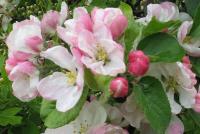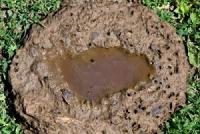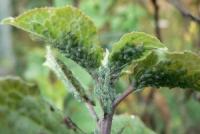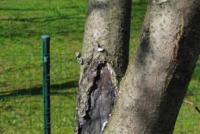Many useful tips on growing roses! Care of roses in the spring, tips for novice gardeners
6 mistakes when growing roses
Cottage is not only a garden and vegetable beds, it is also a colorful, fragrant sea of flowers, among which the rose occupies the most royal place that rightfully belongs to it. The shrubs of beautiful roses have long been a source of pride and envy among summer residents, and every year it became a matter of honor to get a new, most unusual and stunning variety of indescribable beauty in their flower garden. And so it is a shame that this “very-best” for some reason did not bloom, fell ill, or completely withered.
Why it happens? There are a few mistakes that inexperienced (and sometimes even venerable) gardeners make when growing rose bushes. Today we look at the most common ones.
Error 1:the wrong choice of planting place. It’s a mistake to plant a rose just where it will be “beautiful”. Why can a rose not be planted everywhere? To grow a healthy and richly blooming rose bush, you need to know where the plant will feel comfortable and cozy. Without taking into account the specific preferences of the rose, it is impossible to count on beautiful flowers and longevity of the bush. What are its features can not be ignored? We must remember that roses: Light-loving. Light has a decisive effect on the power of growth, the number of flowers and resistance to fungal diseases. The more light - the better the rose feels.
At the same time, some varieties climbing roses They also feel wonderful in the shade, therefore, as well as to people, you should always find an “individual approach” to roses. Heat loving. With a lack of heat, the accumulation of nutrients necessary for the normal development of the rose slows down. The cold north and northeastern winds "take away" the most, so it is advisable to protect the roses from them. Do not like wet soils. Long stay of roots in the water leads to the extinction of the bush from the lack of oxygen. In addition, in winter, wet soils are cooled more strongly, and the plant can freeze. Prefer neutral soils.
The ideal soil acidity level (Ph) for roses is 6-7. In neutral soils, rose is best absorbed by the nutrients found there. With an increase or decrease in Ph of some substances goes into a form inaccessible for plant absorption. Feel bad under the trees. If your rose grows in the shade of trees, do not expect flowers from it. Trees will take away her water and nutrients, because of the shadow of the shoots will begin to elongate, become thin, the resulting false buds of flowering will not give. And the probability that the plant will suffer from fungal diseases also increases. In short, we must not forget that roses are queens.
A place where they will feel comfortable and delight you with flowers should be sunny, protected from cold winds, located at a relative distance from the trees.
Error 2: improper planting of grafted roses If a rose is grafted, then when it is planted, the place of grafting is the weak link that needs special attention. A rose is correctly planted, the site of vaccination turned out to be 3-5 cm below the soil level. At the same time, in areas with sandy soils, planting can be a little deeper, and on clay soils, on the contrary, slightly smaller.
Why is this so important? If the place of vaccination at planting remains above the soil surface, then new buds and shoots on the seedling will be formed where it is well lit by the sun - that is, they will appear on the rootstock (rosehip). The resulting wild growth will begin to take away nutrition and moisture from the cultural part of the rose, which will necessarily weaken its development. If the place of grafting is deeply buried, then the rose does not get acclimatized, and when watering, the root collar can rot, rot, then the rose will die.
But in climbing roses, when planting, the grafting site needs to be buried more - about 10 cm below the soil level. In these roses, it is during this planting that roots are formed on the cultural part of the sapling, and the deep roots of the hips do not give rise to shoots. Details on how to properly plant a rose sapling can be found in the publication We breed roses ourselves. 6 video clips to help beginner flower growers
Error 3: wrong summer pruning Summer pruning of roses is a very important element of care. Therefore, you should pay attention to the two most common mistakes in this area. 1. Wilted flowers remain on the branches Many gardeners never remove wilted flowers from the bush. The petals fall off, and on the branches remain the fruits that seem to not disturb anyone. But only “sort of like” - in fact, this is wrong. Such carelessness in care can call into question all subsequent flowering of the bush this year.
Why is this wrong? Because, as it should be in nature, the plant will consider its mission of flowering accomplished and will begin to “work” on the formation of fruits and preparation for winter. But we need a rose to bloom! Therefore, it is necessary to cut the flowers without waiting for them to wilt, which stimulates the bush to the further formation of flowers. And how to perform such a summer pruning of roses, shown in this video
2. Shoots without flowers are ignored. Unfortunately, we almost do not pay attention to blind shoots - those who do not carry flowers - believing that “the bush itself knows where to give flowers and where not.” Why is this wrong? Ignoring these shoots, we ourselves deprive ourselves of many new colors. But enough to intensify such shoots pruning, and they will turn into flowering! In the next video, Natalya Petrenko tells in detail and shows how to competently carry out a stimulating pruning of blind shoots.
Error 4:surface watering Roses should not feel a lack of water. Gardeners who water the roses on the surface, superficially, make a serious mistake: such watering, even if it is carried out daily, will not bring results. Why is this wrong? Surface watering is so named because only the surface layer of the soil is soaked, and the moisture does not reach the roots. And when visually well watered the plant is not watered. How to water properly?
It is best to make a circular hole 12-15 cm deep right before irrigation, fill it with settled water, and after the water is absorbed, fill the hole with earth (not bad and mumble)
The approximate frequency of watering: during the active growing season - once in 7-10 days, and in dry hot weather - in 3-5 days. A single rate of irrigation - from 5 to 10 liters per 1 bush for ground cover roses and 10 to 15 liters for climbing. Watering in the thick of the rose is impossible. This is best done in the evening. But if you water by sprinkling or spraying with a hose, then it is not recommended to water either on a sunny day, so as not to cause burns to the plant, or in the evening, because the leaves that did not dry out will become a gateway for a fungal infection. In early autumn, watering is recommended to reduce. The only exceptions are those varieties of roses that continue to actively bloom.
Error 5: wrong approach to nutrition Many inexperienced gardeners try to feed their darlings as best as possible during flowering ... and make a huge mistake. Why is this wrong? Not always to feed the plant is good. Such a seemingly good deed can sometimes lead to the loss of flowers, or even the death of a rosebush. It is important to understand when and what fertilizers are needed for a rose, and what will be harmful for it:
Full complex fertilizer, including nitrogen, potassium and phosphorus in equal proportions, it is important for the plant to get in early spring, and during flowering it will only cause harm. Nitrogen is needed in spring and in the first half of summer for active growth of shoots and leaves, and in the fall it will become an enemy for the plant, because the new shoots, the growth of which it will provoke, will not have time to get stronger and will almost certainly freeze in winter. Phosphorus and potassium contribute to abundant flowering, so they will be useful and relevant during the budding period.
The last dressing is carried out in mid-September, using a phosphorus-potassium mixture, and later fertilizers will not bring any benefit. Submerged and semi-mature manure is an excellent organic fertilizer, and fresh manure will cause burns on young roots. During the flowering period, it is advisable to suspend all additional feeding. In the next video, Irina Makhrova will show us how the rose bushes are fertilized in practice.
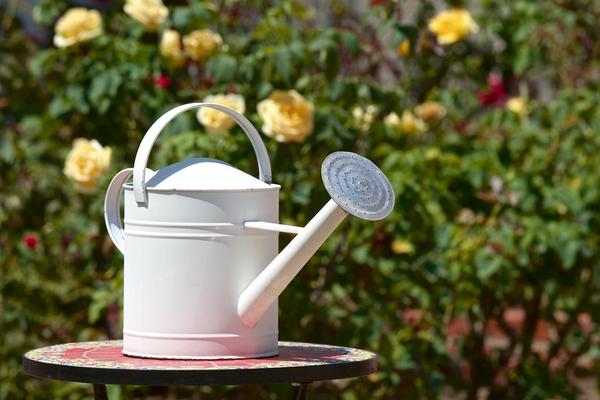
In the next video, Irina Makhrova will show us how rose bushes are fertilized in practice. Error 6: improper preparation of roses for winter When preparing rose bushes for winter cold, four errors are most common: Autumn dressing with nitrogen fertilizers Leaves remaining on the plant Early shelter of bushes Significant pruning of shoots
Why is wrong to do so? Nitrogen provokes the growth of new shoots, the wood of which does not have time to ripen, and these shoots will freeze out in winter. Leaves remaining on the stems, on which pathogens and pests remain, can become a hotbed of diseases under their shelter. Early shelter can lead to the fact that the growth processes in the shoots will not stop, and they will not have time to mature and, therefore, freeze. Shelter roses should be carried out after the first frost. Pruning is better to perform in early spring, when it will be clear which shoots successfully wintered. How to prepare the rose bushes for winter is described in the following video:
Question: how to cover roses for the winter? When it needs to be done, how can they be covered? This year I planted three bushes for the first time, and I worry how they will survive the winter. Our frosts are very strong, it is already cold, and the snow has not yet fallen. I read that it is impossible to hide early - they can melt. How to determine the deadline so as not to be late? I'd like to save my roses, I hope for your help!
Answer:
The preparation of roses for winter begins in the summer: from mid-August, fertilizing with nitrogen fertilizers is stopped. Excessive moisture retards the ripening of wood, therefore reducing watering and loosening. While the weather is warm, do not cut off the withered shoots, remove only the dead flowers, so as not to stimulate the growth of new shoots, which can weaken the plant. An exception to this rule is climbing small-flowered roses, in which whitened whips should be completely cut off. Tear off the leaves in the lower part of the bushes of all roses, treat the bushes to prevent diseases with phytosporin and pour 2-3 shovels of sand with ashes or dry garden soil to the roots. Proceed to the shelter, when the minus night temperature is established. The first stage: hilling to a height of 10-15 cm, then with the onset of stable cold in climbing and ground-covering roses, tie the branches, place them on foam, and cover them with lapnik. Cover all groups of roses, except park (for middle band Russia). Shrub roses are pruned slightly, removing unripe shoots and shortening the rest to fit under cover. On bushes from the early autumn, dry leaves are poured with a layer up to 20 cm, spruce branches are laid and arcs are put on top, which are stretched on spanbond. Climbing roses are removed from the supports and laid on the ground, covered.
Fitosporin-M is prepared in the form of a solution according to the instructions, used to cover the roses.
Answer:
It is necessary to make it a rule to know the variety of roses. This will help determine the identity of a particular type of garden roses. And on the basis of this conduct the preparation of the bush for the winter. If you have hybrid tea roses or floribunda groups, then low pruning is suitable for them, when they leave 13-15 cm from the base of the bush. With autumn pruning, it is worth making a reserve and pruning finally in spring. The roses themselves are quite a good deal to pile up with dry earth. The general rule there is a mandatory collection of old leaves, both fallen and those that still cling to the branches. Unripe green leaves under cover can become a hotbed of sores. Collected leaves need to burn. When cold weather is established, you can remove the buds and flowers to reduce the evaporation of moisture. After all, the roots in the cold land are no longer working. Old branches are shortened by a third or half, and lateral growth by two or three buds. Remove diseased, dry and unripe branches. From October I begin to bend down to the ground roses blooming on the shoots of the past year. It is important for these roses to preserve the mass of branches that has grown over the past season. That is why you need to lay them on the ground, and not cut. Some varieties are very difficult to lay on the ground, so you can do it gradually. It is possible to bend down both the connected bush, and separate branches. For a gradual pull at a distance of about a meter from the base of the bush, a peg is hammered in and the bush (or branch) is gradually attracted to this peg with a rope. For two or three steps a bush can be laid on the ground and pinned to it. And on this suspend the work of the shelter. With the onset of the first frosts, it is necessary to pile up the bases of the bushes with dry ground, prepared in advance, or pine litter. Above the bush pinned to the ground, I place arcs of thick wire. Such arcs are harvested once and serve for many years. It turns out something similar to the basis for the greenhouse. Then I sprinkle No. 60 Spunbond on these arcs in two layers and pin or press down along the edges. If the shelter is long, then the arcs should be fastened along the uppermost points with a longitudinal bar so that the snow with its weight does not fill them to the side. If you want to cover one rose - you can put the arc crosswise. A small tent will turn out. A strip of film can be fastened on top of the cover above the spunbond to provide protection against melt water. Fasten well with large stationery pins directly to the arcs. It is clear that the roses themselves under the shelter would be good to pre-process. Do not forget to spread out the mordant from the mice or put on the smell-repelling herbs, for example, the remains of coriander bushes or the color of the elderberry (you had to think about this beforehand). It will protect you well from the mice and spiny coniferous garbage or lapnik. The covering of the laid bushes should be carried out when the stable frosty weather is set at 5-7 degrees. This will help substances in the stems to go into a state that is more resistant to frost. Progress does not stand still, and now special cones are beginning to appear for sheltering roses from a material similar to foam plastic. They are still sold in few places, but if you still become the happy owner of such cones, but do not forget to make several small holes in the walls for ventilation and press down such a cone with a heavy stone from above so as not to blow. My neighbor has been successfully covering roses for several years with cones made from penofol. It is such a shiny plastic foam material that is flexible and pliable. from it she made tunnel shelter in arcs. The material is durable and will serve more than one year. It is only important to provide ventilation under it.
Question:
Here and I have a few questions. That is about the first time I heard about penofol, it's interesting! I have leftovers, but it's scary to use something - it’s also air-tight ... And how purely can ventilation be done? Holes in a cone or something else? I just had a bad experience about seven years ago with one of the first rose bushes (ground cover): I covered it with an ordinary wooden box, on which I threw a sackcloth on top. It seems to be all breathable ... But the winter was unstable, with thaws ... In general, my bush was completely out. Now I’m tearing myself apart between the desire to make a safe and durable shelter made of penofol and fears that the plants will die under it ... Tell me more in detail, please, how to use this material! And you puzzled me about varieties ... Of course, you are right: you need to know the variety! But we still have a very common variety “neighbor (girlfriend, mother-in-law, etc.) gave”)) This is probably the most common variety of all plants in our area)) So I have a rose that my friend gave me. She said that the park. She just bought seedlings, and there were two of them in the bag - that’s the one that came to me. That is, she, too, doesn’t really know anything about this plant: she has this rose for the first year - and I have the first year ... I’ve half a meter tall, and I don’t understand what to do with it now. Maybe tell me?
Answer:
Cover the bushes of roses with boxes, But on top of the burlap throw non-woven very dense material in several layers. And then another cover with roofing material. At the same time, they are trying to make the top of the shelter as flat as possible so that the snow lingers on it.
Answer:
So, I'll start in order. Penofol. My neighbor did not make holes, there was only a hole in the top of the cone. Yes, and needles in some places pierced. Inside she laid lapnik. And the tunnel periodically aired, opening the ends. Draft through. If you think about it, then the most breathable in the form of a box and burlap turned out to be very moisture permeable. Moreover, the sacking kept the moisture well, and when it hit the frost it became very airtight. It seems to me. Probably, it was necessary to throw a film on top of the box so that the "roof" would not flow)) Question about the rose. If this is a park rose, then try to save the shoots of this year, pinning them to the ground and covering them. If next year she throws out side branches of the second order and blooms to the bottom, then most likely she will need to cover her in the future.
Question:
And if you do not know the variety of roses, then it is better not to cut them for the winter?
Answer:
If the roses of this year are planted, they will still need to be cut in the spring by 3-5 buds from the ground. So now we need to just spud and wait for spring. And during the winter you can try to figure out a variety, for example, according to Rosebuk. There is such a wonderful site for roses.
And it is impossible to cover the roses early because the shoots do not mature, the growth processes in them will not stop. The rose in general in shelter, in heat can rush again in growth. This is where her trouble awaits. This rose of winter frost will not stand. By the way, note that strong winds in winter bring the effect of lowering the temperature on the surface of plants by a few degrees compared to the air temperature.
Answer:
We have a lot of snow. For example, last winter, at least 2.5 meters of snow lay on the roses. None of the cover of such gravity can not stand! What spunbond can resist such a mass of snow? Is it able to withstand the wire arc? At first I also experimented with shelters. There were wooden boxes, housings from hives, tents, then she just began to pin the branches to the ground and cover them with covering material from above. I did not like it, because under a rag ice crust lasted longer. On the one hand, this is good - with return frosts or a long, very cold spring, the roses are not yet ready for the beginning of the growing season. But then, after the ice melt has melted, it takes a long time for the plants to recover. Leaves, too, not covering. The reason is simple - the mouse. Last year they destroyed many gardens. Roses suffered no less. Therefore, one possible method is chosen. In addition to a small tampering, or rather, falling asleep brought by the soil, bending down the shoots. And that's all. For the rest, the will of nature. If everything happens and happens softly and kindly, then a park rose, a climbing rose, and rugoza will survive the winter. What they are doing. It is possible that the colors will be less. But in our climate, with our winter and this happiness.
Snow best shelter. But if you want guarantees on your favorite variety, then it is better to hide. Where the load on the shelter is very large, like you, rose roses cover the roses with shields. Just put them in a lodge. Wooden shields, spring simply cleaned and stored somewhere under the wall.
Method:
Roses hold to minus 5-7 degrees calmly. I do this: I grab stalks to the ground, after having cut off the non-mature tops. Why do I pin, if the spring is still cut? Because you better orient yourself in the protection of the rose. Half of the stalk will disappear, half remains. Then spraying with 3% gels sulfate. Then the heap of dry earth. Spreading mouse poison We cover our happiness with coniferous litter. We cover it well, from the heart ... To the top - bags, spunbond, etc. It is better on arcs or to lay plastic bottles between roses. In principle, a layer of air between the needles is obtained. I do not bother with arcs. Actually, everything. I have more than a hundred roses, so I can’t cover each of them. Theoretically, it is necessary to put something on top of moisture. And in practice, they are discharged faster, because there is no rain from above, but moisture evaporates from the ground and sopreet faster. Double spunbond if wet, it is not too much. I soot them, deepening the inoculation by 5-10 cm, so they live well. And if grafting is at ground level or higher, no cover will help in the middle lane.
Shelter materials: For places with a harsh climate, materials such as roofing felt, film, and modern insulation materials are used. The disadvantages of such a shelter are that roses do not breathe and end up in a kind of greenhouse. Condensate from moisture is collected, and if the spring does not open in time, they mop up. It is necessary to constantly monitor such a shelter, open the ends at thaws for airing, otherwise there is a risk of developing rot. In the spring there is a risk of burning in the bright sun, as the rose is under dense shelter for several months - roofing material in the dark and wears away from the light. This oblige gardeners after disclosing to shade the roses from the light, to fence the special devices. A shelter with spruce branches will provide air access and serve to contain the snow so that a snowdrift is higher above the roses. Under the spruce branches, you can also make a wire frame to reduce the load of snow. Shelter nonwoven materials. These materials have various names - lutrasil or spandbond. This material looks similar to non-woven-paper-like non-woven material based on glued, cellulose fibers, which can serve for about 5 years. Lutrasil is both thick and thin, but for covering roses it is better to choose a thicker material and use it in two layers. The advantages of this material are that it does not let in moisture in the form of raindrops, but it allows the evaporation from the ground to pass, leading them outside. Thus, roses can breathe without accumulating condensation inside. Lutrasil also passes the light, and with the arrival of spring, you can immediately remove the shelter without fear of sunburn.
Method:
And we roll up roses, prune, and when the night temperature is -7, we close them with 5-liter plastic bottles. In the bottle cork we make an awl aperture. Cut off the bottom. And as if we screw the bottle into the ground above the plant. Everything. Once it was not possible to arrive early at the dacha, arrived at the beginning of May, so we had all the roses with leaves and we felt great. And so, if during the day it suddenly became hot in spring or autumn, and the roses were already covered, then I simply twist the lids. I forgot to make it clear that we live in southwestern Siberia (Kemerovo region) and sometimes there are frosts of up to -35 more than one week.
Question:
It is interesting, and who has the experience of a climbing rose not to be removed from the support, but to wrap with dense lutrasil (2-3 layers)? Region-southern Moscow region.
Answer:
I harbor roses like this: if the roses grow in separate bushes far from each other, around the bush I drive in pegs and with a stapler I pin a ruberoid to the pegs. On the north side, the ruberoid is left to hang so that it can be folded up when it begins to warm. If there are needles, I fall asleep in this “house”, if not, then I fall asleep above the ground. But I pour the earth anyway, and in the spring I shovel it away. In the spring, when the frosts stop, I remove the roofing material in parts: first, the northern side, then the top, the southern side, I remove the last with an interval of about 3-5 days, otherwise the branches will blacken. Those roses that grow in a row, I cover the same way, but put along the row of the arc and lay the roofing material on the arc. I attach it to the ground from two sides, leaving two sides for blowing through from the beginning and end of the “tunnel”. Also leaving there tails of ruberoid to close and open. This method has been used for many years. Not once roses are not lost. The main thing is not to reveal it sharply - they are afraid of sunburn in early spring. Climbing roses are sheltered in the same way, but I bend them to the ground and put them on wooden pallets so as not to get washed out when the snow melts. Recommend. Good luck.
Answer:
Many of the rules from the above comment I also use. But my method of shelter is a little different. I do everything in one day ... tearing off all the leaves of the roses, then putting them, pinning them, on the spruce branches, not tucking the ground, because we have frequent thaws after frost and in the middle of winter, and at the end, and in March, when how. The neck of roses does not stand up to them. Then on top of the arranged lashes of roses, I put the spruce branches again and cover with a layer of lutraxil, on top I put a box with holes from under the fruit. In the spring, I first remove the box and lutraxil, then take off everything else, let the roses straighten up and put a spruce branches between the branches (sometimes tied) from the sun's rays. Roses breathe, but are covered. As soon as I see the swollen buds, I start to gradually start the spruce branches ... Try my method on some bushes, I always try not on the whole rosary, if I’m not sure about something, but as an experiment.
Answer and method:
I will share my experience near Moscow. We have large shrub roses gathered in one rose garden, so they all hide together in one cloth, so much easier. We cut all the leaves of the roses, put arcs above them (they are large), cut the roses to the size of the arcs, spray them with iron sulphate solution (according to the instructions), we can slightly pile up, then cover the arches with 2 layers of lutrasil 60. Lutrasil was bought in width 6m, it is sold already folded in half and the 3-meter width in 2 layers is enough for us to cover with one cloth. It turns out the toning air-dry shelter. We keep the side ends open before the onset of stable frosts. So that the wind does not tear the canvas, we fasten it in many places to the arcs with stationery clips, this is very comfortable and durable (the clips of the largest size). In March-April, if there is a lot of snow and the sun starts to bake, we try to dig out and open up the air. Drying under cover is very important for a successful wintering of roses. It is necessary to open roses gradually, better in cloudy weather. If the shelter was not removed in time, with poor ventilation of rose bushes and from increased humidity an infectious burn occurs. Therefore, cover the roses for the winter only in dry weather, and in the spring do not be late with the removal of the shelter. Additionally, no spruce branches or leaves have never been covered. Roses always bloomed regularly. We also harbor single roses and so on.


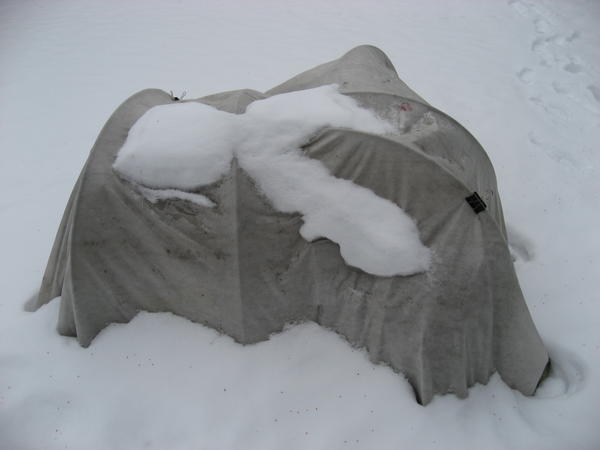
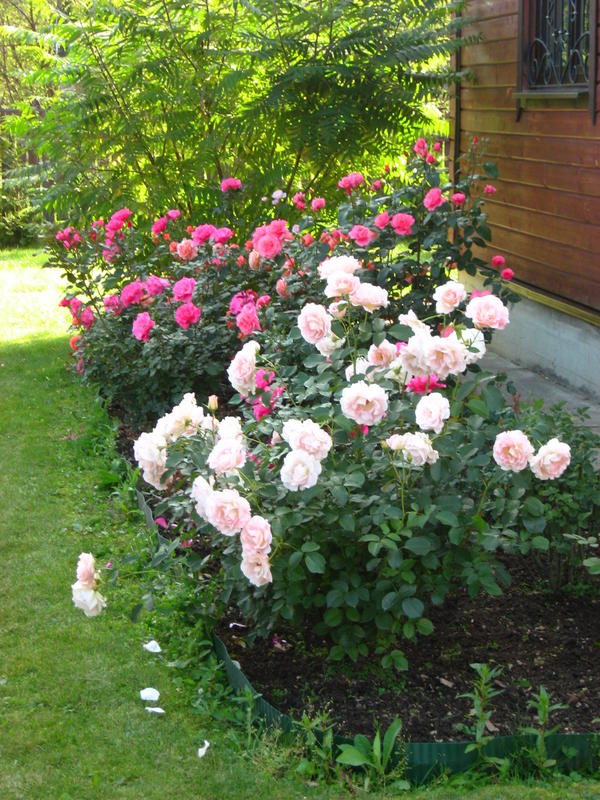
Question: I planted roses for the first year, many at once. I would like to be short and clear about pruning for the winter.
It is difficult to give you an unequivocal answer. You need to consider the weather conditions in your area, the frost resistance of your roses, their size and ability to bend down to the ground, as well as the availability of materials for shelter. For example, the highest winter hardiness is different park roses. Some of them do not need shelter at all, others require light protection in the form of bending down to the ground or wrapping shoots with paper. And hybrid tea roses are the weakest for winter resistance; they need extra careful shelter for the winter. Because lowering the temperature to -9-10 degrees for them can be disastrous. Floribunda and polyanthus roses, although they are more resistant to dampness and overwintering compared to hybrid tea roses, cannot overwinter without shelter. If you plan to further warm the roses for the winter, then you need to remove those parts of the plants that can be a source of infection during wintering: watery, undigested (i.e., non-lignified shoots and their parts), damaged, that is, broken or having signs of disease - black or brown spots, mold, rust, etc. Cut climbing, large-color and powerful straight-growing bushes need minimal. Their stems bend to the ground, and in the spring only broken, dry or frozen stems are removed. But they can be a little thin.
If you want your hybrid tea roses every year they bloomed abundantly and pleased you with an abundance of perfect forms and flowers rich in color, then you need to take care of them: during watering, feeding, cutting and covering for the winter.
Watering, feeding
Responds well to watering and dressing rose bushesbecause it is connected with their biological features, thanks to the development of new shoots, continuous flowering is obtained, because the buds are formed at the ends of the shoots. The plant needs mineral nutrition and water supply regularly in order for it to have strength for constant growth. Particular attention should be paid to nitrogen supplements, although for him and phosphorus and magnesium, potassium, calcium is also the main nutrients. Compounds of potassium and nitrogen are introduced in the spring during the growing season, they are mobile and are easily washed away by rain from the soil.
Potassium nitrate can be fed in the spring at the rate of 40 grams per square meter. After each wave of flowering, we bring nitrogen and potassium in the summer, once a year in the fall we feed with magnesium and phosphorus, because they are stored in the soil better, for this we use 40 grams of potassium salt and superphosphate 60 grams per square meter.
Such organic fertilizers as: humus, manure, compost are very useful for roses, they improve the physical condition of the soil, affect its acidity, are a source of phosphorus, potassium, nitrogen. But it is necessary to bring them only once every three years on the basis of one bush about 10 kilograms. For top dressing it is most convenient to use complex fertilizers, they contain nitrogen in combination with phosphorus, sometimes with magnesium and potassium. Watering roses We combine with top dressing, because watering for plenty of blooming roses is necessary. They suffer from a lack of moisture: they wither, stop growing, flowers and leaves crumble, lose their decorative effect and shallow flowers. If the lack of moisture falls on the period of development of buds, and if you later attempt to intensify watering, this will not improve the situation, the flowers will be small, faded. We water the roses once a week in dry weather, while using warm water, especially in the heat.
We pour about 15 liters of water under the bush, but frequent watering is harmful for roses and in small doses, because after them the surface root system is formed and it is easy to damage it when the soil is loosened. The topsoil dries out quickly and if you miss regular watering, roses start suffer from moisture deficiencies. We water in the wells and the leaves do not wet, so that they do not get sick with fungal diseases. After irrigation, the soil is loose, especially in hot weather, because a soil crust is formed and the water evaporates quickly.
Pruning
Roses bloom for the whole season several times, they are pruned in spring and summer and autumn. The rose is a perennial shrub that has skeletal shoots of 3–4 years of age, and several growths are produced on them per season. As a result, the bush reduces the decorative effect and this makes it thick and affects the quality of the flowers. That's why we remove old shoots. For cutting, we need a sharp knife and pruner, because if the tool is blunt, then it breaks the fabric and the cuts do not tighten well. And they become the focus of infection such trimming, upper buds die.
In order not to harm the decorativeness of the bush, there are simple rules for pruning. We cut the shoots at an acute angle, 1.5 centimeters above the bud, so that the acute angle is above it, but the upper bud shows the direction of the future shoot. We leave it on the outside when trimming, but if suddenly the first kidney grows on the inside, then it must be removed. Apply for hybrid tea roses strong, medium and weak pruning, it depends on the purpose.
Remove more than half of the shoot and leave 2-4 buds with a strong pruning, save about 8 buds with an average pruning. As a result of such pruning, the flowering period is postponed, but the flowers will be large and smaller. If pruning is weak, then remove only the upper part of the shoot, if it is frozen and damaged. The bush blooms early with such pruning, the flowers are larger, but they are smaller in size. The development of roses is greatly influenced by the period of spring pruning, and especially by flowering during the whole season. Pruning is done when the kidneys grow to 0.8 centimeters and we don’t rush with pruning if they don’t wake up, but you can’t be late with pruning too.
Because young shoots will go, the bush which has spent on them nutrients will weaken during pruning. We leave the shoots about 15 centimeters long and 4 buds, if we prune weakly growing varieties, about 25 centimeters with 6 buds in middle growth and 30 centimeters with 8 buds in strongly growing rose bushes. Pruning roses in the summer after flowering is very important; pruning promotes abundant flowering, prevents fungal diseases from becoming infected, and does not waste force on the formation of fruits.
We spend summer pruning selectively, as the roses begin to bloom, if we grow roses to decorate the garden, they should be cut all at the same time when the rose bushes finish their blooming. Cut the heads of flowers along with the shoot, above the 3 buds of the flower, cut off hybrid tea roses, which are intended for a bouquet. If there are prolonged rains, the flowers and buds are removed to prevent gray mold diseases. We spend the summer and thinning: remove shoots that grow into the inside of the bush and weak, shorten too long.
Before sheltering for the winter in the fall, we cut the roses, thereby facilitating access to the bushes. Strongly cut off the shoots of roses in the fall can not be, because the pruned shoots froze through deep in winter. We cut out only weak and young undisturbed shoots. On the bush can grow and wild shoots below the vaccine and they need to be cut, because wild growth can drown out a rose, as wild rose is more viable. The rose will stop growing and then die completely.
Shelter for the winter
We prepare roses for winter in the second half of summer, stop feeding with nitrogen fertilizers in July, because they stimulate the growth of shoots and may not mature before the onset of cold weather. The frost resistance of the plant will increase the fertilizing with phosphate-potassium fertilizers. Increases winter hardiness of roses and light frosts for several days.
With the shelter of roses for the winter, we not only protect the roses from sudden changes in temperature, which are increasingly found in the fall, at the beginning of winter and of course from frost. The cold wind and the bright sun contribute to the strong evaporation of water and in this case we protect them from draining. Rose cannot replenish the water supply when the soil freezes, and therefore there is a sharp lack of moisture and the plant dies.
Good protection from frost and climatic stresses hilling bushes. We pour a mound around the radical neck from dry ground about 30 centimeters in height and cover it with lapniknik. You can spud and garden land, but it is better to do it with sand in which added peat and sawdust.
But the most reliable option is a fundamental shelter, for this we install wooden frames. They are packed with thick paper and the whole structure is covered with foil. Only the ends are not thoroughly closed, so that we can open the shelter during the thaw for airing.
Before covering the roses, they must be treated with any fungicide to protect against diseases, inta-vir or kinmiks. We remove the shelter as soon as the soil thaws and dries out in the spring. We remove the upper part at the end of March or the beginning of April, and completely open the roses at the end of April. After this, the roses should be cut and fed.
Mealy dew
A powdery powdery appearance appears on the young leaves, it is compacted gradually and the fruiting bodies of the wintering stage of the fungus are formed there. Young shoots are deformed, the leaves turn brown and dry prematurely, the buds often do not open and dry. The causative agent of the disease winters on the affected buds and shoots and young leaves and shoots become infected in the spring. The disease develops quickly with high humidity, with sharp fluctuations in temperature, with excess nitrogen fertilizers, with drying or over-wetting of the soil.
Protection
Cut the affected shoots roses powdery mildew in autumn, perekapat soil and burned fallen leaves. We spray 300 grams of vitriol on a bucket or 200 grams of copper on one bucket against a primary infection in spring. Cut the affected young shoots when they grow back in spring. Spray the bushes with soda ash after 2 weeks in the summer, do not do it only during flowering.
Very good help folk remedies, solution of ash or mullein. We take one kilogram of fresh manure and dilute it in 10 liters of water, add 200 grams of ash and leave for a week. After that, strain the solution and process it at the first signs of the disease, repeat the procedure after 4 days.
Gray Rose Rot
With the disease of this disease roses stalks, young shoots, buds, leaves, and buds rot and die. If the weather is cool and rainy and moderately warm, the diseased parts of the plant are covered with abundant gray spores, the decorative effect of the roses decreases, the flowering decreases and the whole plant can die.
WITH protection measures - cut the affected parts of the plant, if the bush is severely affected by the disease, cut and burn. Sprayed bordeaux liquid 100 grams per bucket or copper chlorine 50 grams per bucket, during budding and after flowering.
Rose rust
Young shoots are cracked and thickened if affected by this disease. Spores in the form of a yellow powder abundantly protrude from cracks and shallow brown ulcers are formed on the stems in the future. The leaves dry out and fall off, because yellow spots are formed on them, and orange spores grow on the underside of the leaf. On the affected stems and plant debris, the infection persists, several generations of spores are formed over the summer, and they infect healthy plants. In rainy summer and an excess of nitrogen in the soil contributes to the development of the disease.
Protection - we collect the vegetable remains, we cut off the affected escapes, we process ulcers with copper sulphate. Before blooming buds, spray the copper sulfate with 300 grams per bucket of water or 100 grams of Bordeaux liquid.
Spider mite
Ticks settle on the underside of the leaves, twist them in thick cobwebs and suck the sap, thereby damaging them. The pest forms over the summer about 12 generations.
Way to fight - solutions of tobacco or tobacco lead to the death of up to 100% of pests on the third day after spraying, also effective solutions are from yarrow, wormwood.
Aphid green rose
It reproduces very quickly, they feed on the juice of the shoots, buds and young leaves. As a result, they are deformed. The eggs hibernate around the buds and in the spring the larvae emerge from them and damage starting from the buds and then the leaves. Up to 7 generations develops aphids over the summer, if the number of aphids is large, then damaged buds do not open and dry up.
WITH struggles of struggle - we spray with inta-vir, fufan, karbofos, we also use herbal preparations for spraying from tobacco and tobacco: for 9 liters of water we take 300 grams and boil for 30 minutes. Then insist about 2 days and filter, add 40 grams of green soap, which was dissolved before that in one liter of water. Mix the solutions and spray the plants.
We also use solutions from wormwood, yarrow, for this we take one kilogram of dry yarrow and dry wormwood 1.5 kilograms. Fill with 10 liters of warm water and leave in a dark place for 2 days. After that, filter and add 40 grams of green soap. You can use the soap solution using green soap or household. Soap about 300 grams cut chips and diluted in hot water, then bring the working solution to 10 liters, spraying spend a cooled solution.
Rose in a bouquet
Handmade beauty
The most common breeding methods of hybrid tea roses it is grafting and grafting. Varietal roses are not propagated by seeds, because they do not retain varietal qualities. But on sale you will most likely find grafted seedlings, since not all varieties have cuttings that take root well and settle.
Kidney inoculation
Such an inoculation is called a budding, and the quality of the grafted roses depends on the correctly selected stock from the hips. The stock should have winter hardiness, be winter-hardy, resistant to diseases, intensive to grow and be durable, have a growing season, have little development of root growth, be resistant to drought and excess moisture, have abundant fruiting, and good maturation of seeds.
It should also have a weak spikeiness, a long root neck, well developed root system. These requirements have rosa rosehip canina - rose dog or ordinary.
We grow a stock for this from seeds, collect the hips, when they turn brown seeds, clean them and put them in a jar with wet sand and keep them in a refrigerator at about 5 degrees before sowing. Sowing is carried out at a depth of about 4 centimeters and the bed should be covered with a net from mice. On next year in the fall we dig out the leaves and sort them according to the diameter of the root collar.
The bed is filled with organic fertilizer and seedlings are planted in this place. We shorten the above-ground part to 10 centimeters and roots by 15 centimeters before planting. We plant in such a way that the root neck is located above the soil surface, at a distance of about 20 centimeters. After this we water and roll up, it is to protect the seedlings from bulging in winter.
We cut cuttings for a graft from mature shoots that have finished flowering; we carry out the preparation just before the inoculation. You can store cuttings for about a month in a wet burlap in the refrigerator. Cut the bud off the stalk with a small amount of wood and insert it into the incision under the root collar. We tie up the vaccination site with a film, check after 4 weeks whether the vaccination was successful. If all is well, remove the film, and in the winter we roll up grafted bushes at 25 centimeters in height. If you fear. that the seedlings can freeze out in winter, they can be dug out and stored in greenhouses prikopannye, and landed in the spring.
Spring before planting seedlings roses we cut off 2 centimeters above the grafted bud, the shoot that grows from it is shortened over 4 leaves in order to get a bush from several stems. We remove the shoots, and permanent place we land next year in the spring.
By the way, you can use hybrid tea roses for budding from the presented bouquet. It is important that the roses are not southerners and the buds must be alive.
Green cutting
We put the cuttings in the root formation stimulator for 20 hours, the ends of the cuttings should be immersed 1 cm in a solution of 0.01% heteroauxin, you can use aloe - 10 drops per glass of water, honey - one teaspoon per glass of water, then rinse the cuttings with clean water and land.
We pour the substrate from the top of the turf land river sand with vermiculite about 4 centimeters. Then we cover the cuttings with glass or plastic jars, if they are planted in a box with a film. Moisten the cuttings several times a day after planting, remove fallen leaves. Calleus appears after 2-3 weeks and roots are formed after a month. We remove the jars and continue to grow the cuttings, feed 20 grams of urea into a bucket of water once every two weeks.
Can be propagated from the gifted bouquet, if it has live buds. Do not have time to ripen shoots rooted cuttings and we harbor them with sawdust or leaves for the winter.
The most popular flowers at all times were roses. Their royal buds will not leave anyone indifferent. Roses - ideal plants for garden beds, park areas. They can be used to form hedges and colorful arches, they are simply indispensable in landscape design. How to care for roses, so they are pleased with beautiful and long flowering? For amateur gardeners, care will be a pleasant time spending, because there is nothing better than doing your favorite thing. In turn, the lush rose bushes are responsible for caring for abundant flowering. The rosaries on the site will become an amazing place that will attract the eye with beauty and charm.
Soil for planting roses
How to start planting and how to care for roses, you can learn by reading the following recommendations. Roses are demanding of sunlight, the place for their planting is necessary to choose an open, spacious, away from the trees. There are no peculiarities for the soil for roses, it is important that it is loose, with a sufficient amount of mineral fertilizers, and drainage is present. Lime, rubble and sand should be added to wet and heavy soil to make it more loose. If there is too much sand in the soil, clay can be added to it, but in small quantities. Swampy ground before planting rose bushes should be dug over several times to get excessive moisture out of it. The ideal option for good growth and development of roses will be black soil, but you should not plant new bushes on the places where these plants have grown for a long time, otherwise they will grow worse.
Planting rose bushes
The question "how to care for roses" should be asked at the planting stage, it should be carried out correctly and on time.  For different climatic conditions, there is a planting time for this plant, but in most cases the planting occurs at the end of September or the month of October, you can also plant roses in the spring season. Before planting the roots is recommended to hold in the water for several hours. The drunk moisture seedlings are well received. For the prevention of various diseases can be omitted in a solution of fungicide. Dipping roots in a clay mash is also a positive effect. It is better to shorten the roots of a plant, plant shovels at the depth of one or two bayonets.
For different climatic conditions, there is a planting time for this plant, but in most cases the planting occurs at the end of September or the month of October, you can also plant roses in the spring season. Before planting the roots is recommended to hold in the water for several hours. The drunk moisture seedlings are well received. For the prevention of various diseases can be omitted in a solution of fungicide. Dipping roots in a clay mash is also a positive effect. It is better to shorten the roots of a plant, plant shovels at the depth of one or two bayonets.
Rose care
How to care for roses, what important rules you need to know when growing this plant? Roses need the entire summer season to water, feed, loosen the ground.
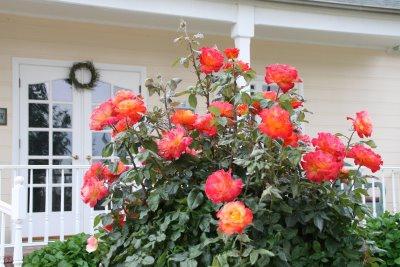
Watering should be done every ten days, it will positively affect flowering. For fertilizer, you can use manure, ash and compost, bird droppings. Caring for roses in the fall includes preparing for a successful wintering, for this produce hilling bushes. To prevent infections, the trunks are treated with aqueous emulsion paint with a small addition of copper oxychloride. Care of roses in the spring will consist of the obligatory pruning of the shoots. This procedure is performed a few weeks after the weatherization of the bush has been removed, but no later than the leaves will bloom. When pruning, remove diseased, dry and old shoots.
Before the little sapling turns into a magnificent rose bush, striking in its beauty and perfection, it must go a long way. If you want your roses to grow well, develop properly and delight you with abundant flowering, you need to take care of them, helping them at every stage.
It is possible that without special care Roses can survive and even begin to bloom, but as a cultivated plant they need support so that they can reach their full potential. Without this, many bushes will die, and the rest are at risk of being swallowed up by the wild shoots of the rootstock or withered without proper care.
And what a pleasure to walk on a hand-grown rose garden and inhale the scent of beautiful flowers! The rose is considered to be the brightest flower in the garden, it always attracts attention. There is a saying that there is no better gift than the one that was created with your own hands. For roses, grown on your site, this also applies. It is so pleasant to give a close bouquet of roses that you holili and cherished. In addition, self-grown roses can decorate your home by transferring a piece of nature to it.
We hope that our rose care calendar on our website will help you with this.
Rose Care in January
Well, if January turned out to be snowy, the snow covered the rose garden, protecting it from the cold, and you need not worry. However, if there is little or no snow at all, the rose should be covered with 2-3 layers of paper, old newspapers, brushwood or sawdust.
Shelter should get loose and let the air in, so that the roses under it do not suffocate. You can not use for this purpose dense materials that do not allow air, because the plants as a result can rot.
If the snow has passed, it is necessary to shake the snow off the branches so that they do not break under its weight. Have climbing varieties should check the reliability of the attachment of branches to the supports.
February rose care
With the onset of the February thaws, care must be taken to ensure that the roses are well ventilated under the winter shelter. In order for the plant to get fresh air, you need to make holes in the shelters, but leave them on the roses.
Caring for roses in March
When the snow begins to melt intensively, it is necessary to check whether the bushes have flooded under the shelter. To avoid this, in the snow under the shelter you need to dig a small groove, which will flow the accumulated moisture.
From the branches of climbing roses should remove the rope, which they tied in the fall.
After the onset of warm weather in the spray and standard roses spend the first thinning pruning. In the case of winters that sheltered without shelter, frozen shoots should be cut, and the bushes should be thinned out.
If it is not expected frosts, then after pruning should be made 1st fertilizing with mineral fertilizers. If the ground is well thawed, you can plant new seedlings or transplant adult roses.
April rose care
If the land is thawed out and there is no threat of new frost, you need to completely remove the winter shelter. It is recommended to loosen the soil around the bushes to a depth of 10 cm, and remove the weeds immediately.
It is time to carry out the main pruning of standard roses and spray roses, after which mineral fertilizers should be applied, and then the soil should be mulched.
Care of roses in May
It is time to carefully examine the rose bushes in order to identify the possible occurrence of pests or diseases. Sick parts of plants should be immediately cut and burned. With the defeat of pests should conduct pollination or spraying.
If plants are detected with delayed development, you can use foliar feeding.
It is important to regularly remove weeds and cut off shoots that grow from the rootstock (wild ones differ from cultural ones by lighter color of leaves and stems, a large number of thorns and small leaves).
June rose care
Ground roses enter flowering season. After they have faded for the first time, mineral fertilizers are applied under them. For this purpose it is better to use liquid fertilizer so that it can penetrate deep into the soil and reach the roots. Dry fertilizer with hot weather is likely to remain in the upper layers of the soil, because of which the roots of the plant will not be able to assimilate it. Then foliar application can be done 1 time in 2 weeks.
In order for roses to bloom longer and look better, flowers should be immediately removed after flowering. In re-blooming roses, it is necessary to cut off inflorescences and single flowers so that buds reappear on them.
If roses bloom only once, they should not be cut, because otherwise they will not have fruit in the fall.
As necessary, it is necessary to regularly irrigate the plants, as well as loosen the soil.
Care for roses in July
At this time, most varieties of ground roses enter the time of flowering, so it is necessary to systematically cut off flowering flowers, and also, as necessary, water the roses and loosen the soil. Continue to track signs of diseases and pests on bushes.
In the second half of July, the fertilization of roses with potash and phosphate fertilizers to help them prepare in winter should be increased. Nitrogen fertilizers do not need to be applied. After each wave of flowering, continue fertilizing roses with liquid fertilizer.
Rose care in August
It is time to buy new varieties of roses. In addition, if you plan to plant roses, you must proceed to the breakdown of the flower bed and preparing the soil for planting.
In multi-flower climbing roses, light pruning should be carried out, in other varieties there should be summer pruning, during which affected shoots and wilted flowers should be removed.
Rose care in September
In early September, potash fertilizers should be applied to the soil. If there are roses on the site that continue to bloom in the fall, continue to remove faded flowers from them in order to prolong their flowering.
If you plan to plant roses, you must proceed to the breakdown of the flower bed and preparing the soil for planting. Remember: the planting of new seedlings must be completed before the first frost. For the middle band, the deadline is mid-October.
Loosening of the soil should be stopped, otherwise the nitrogen contained in it can be released, whereas it is necessary for the roses to tolerate good wintering.
Rose Care in October
After the temperature has been established at the level of -5-7 ° С, it is required to cut stem trees and tall roses with long shoots. Autumn pruning is carried out to prepare roses for the winter period.
In late October, after the onset of stable cold weather, it is necessary to start warming the roses. Shrubs tucked loose soil, sand or crushed peat, the stems need to cover with brushwood, spruce or any insulating material. You can also build special winter shelters.
Rose care in November
At the beginning of the month, before the soil finally freezes through, it should be mulched with manure or compost.
If the bushes are not yet in the shelter, then in the first week of November you need to create a shelter for all types of soil roses. The hardy park and wild rose varieties can be left without shelter.
Before covering the roses for overwintering, the bushes should be rounded up with loose earth, creating a mound of 15–20 cm in height. Then spruce or tree branches or sackcloth are placed on them.
Before the onset of frost, it is necessary to clean the entire area of fallen leaves and debris. All this should be dumped in compost pits or burned to avoid the spread of disease and the appearance of insect pests.
Rose care in December
By the beginning of the first winter month, all cultivated roses should be in the winter shelter. If there are fallen leaves or other garbage left on the plot, it must be destroyed.
It is also required to hold a pile of roses with snow. Condense it around the bushes - this will prevent rodents from penetrating to the roots of the plants and damaging them.
Galina PANKRATOVA
For the past few years I have been collecting a collection of requirements for roses from lovers. Sometimes it is easier for me to plan a rose garden from 200-300 bushes than to pick up a small group for those who are expecting from the roses resistant, abundant, continuous, and even (you won’t believe it!) Creative flowering. On the proposal to start with simply unpretentious roses, I usually hear that it is "by itself." I must say at once: it’s impossible to get everything from a single rose. But together they are invincible.
Of course, everyone has his own view of the beautiful, including roses. As I was told by the famous Russian artist Dumont Pak, who loves to write goblet roses at the semi-release stage: “The artist has not just his own look, but“ a different vision. ” When I asked why he didn’t let the roses open in his paintings, he confessed that he wanted to capture the “mystery of the moments of eternity.”
Dumont Pak. Still life in the garden. 2011
Larisa Psaryova, Honored Artist of the Russian Federation, told me that the rose became her favorite flower, because “you can find everything in it: insane happiness, and the same grief, tender sadness and warm joy, childhood and old age, wisdom and windy youth . Try to attribute the same to haughty dahlias or proud lilies! ” Larisa Psaryova finds the beautiful even in melancholy.

Larisa Psaryova. Melancholy. 2009
Everything that amateurs are looking for and expecting from a rose cannot be summarized in one article, but some varieties meet the main requirements. It is important that these advantages are not lost among the environment.
Persistence
Some roses show amazing flower resistance. For any variety, this property seems tempting, although nature strives for continuous renewal. Sometimes this update is so fast that you do not have time to carefully consider the flowers. We will look for the most stable top ten.
For a rose cut culture, the resistance of a flower is estimated by the duration of standing in a vase until withering and is one of the most important characteristics of a variety and, perhaps, partly determines its value. For example, the duration of a flower standing in a vase for 10-12 days characterizes a flower as resistant. They estimate it, of course, not in our vases, we get only the remnants of this period, along with tips on how to extend the life of a flower in a bouquet.
For garden roses important resistance of the flower on the bush. What determines the resistance of flowering of each flower? I do not find a pronounced dependence on one or a number of factors, but in some cases flower resistance can be tied, first of all, with its addition, as well as with terry, petal density, and even with the original color and color stability. Giant flowers longer preserve tidiness, although there are varieties with simple flowerswho are not inferior to them in this regard (" CherryMeillandecor", Meilland, 1995). There are varieties in which the base of the petals is so loosely “sewn” into the base that the flowers fall off in whole fragments without even losing their color intensity. (" Saint- Exsupery", Delbard, 2003; " LineRenaud", Meilland, 2008). Sometimes the neat form is preserved, but the attractiveness of color is lost.
Ten of the most resistant varieties

"Farandole" (Meilland, 1999; F, h = 0.7-0.8), sort champion in flower resistance, color brightness and color stability

"Hommaqe a Barbara" (Delbard, 2004; F,h = 0.8), Wagadchnaya and beautiful, which has almost "all in one", except for the smell

"Carte d" Or "(Meilland, 2002; F, h = 0.7-0.8), withthe budding of the bud classic and the density of the petals gives a striking effect of the persistence of flowering
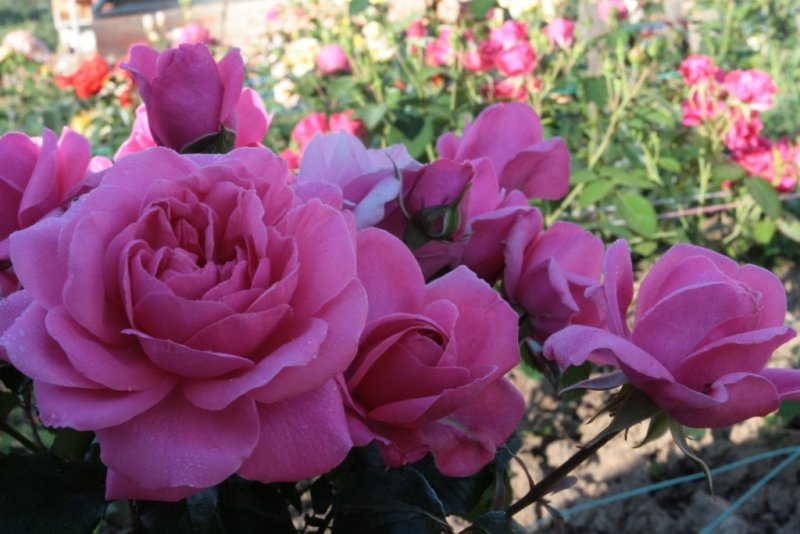
"Berleburg" (Poulsen 1996; F, h = 0.6-0.8), ppocketed with awards is especially good for a "cold garden"

"Bordure Abricot" (Delbard, 2008; F, h = 0.6), cbordure Abricot branches are beautiful from buds to wilting and surprisingly resistant.

"Heidi Klum Rose", (Rosen Tantau, 2006; F, h = 0.5), meach German model Frau Klum received a small rose with great virtues as a gift

"Domaine de Saint Jean de Beauregard" (Delbard, 2005; F, h = 0.6-0.8),only the name seems to be unsuccessful - too long

"Anny Duperey" (Meilland, 2006; S, h = 0.8-1.1),grows slowly, but with a lot of flowers and very fragrant
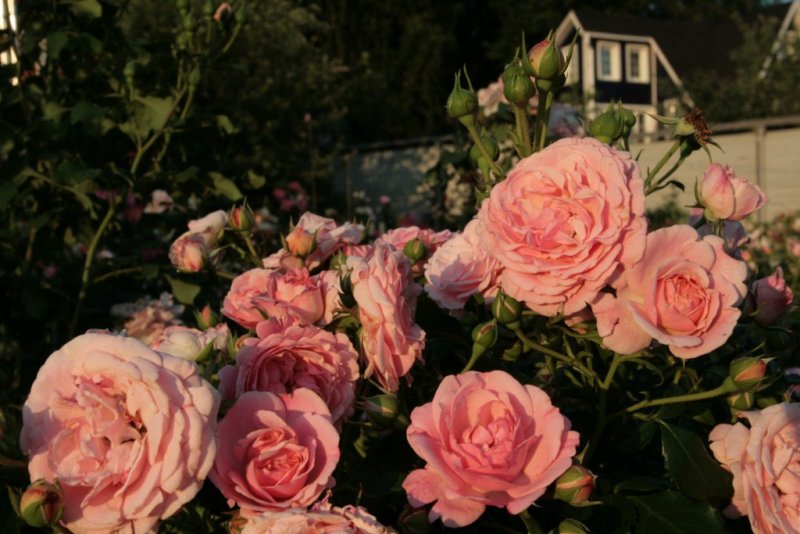
"Saremo" (Noack, 1999; "ADR -1998, S, h = 1.2), this variety is none will not disappoint
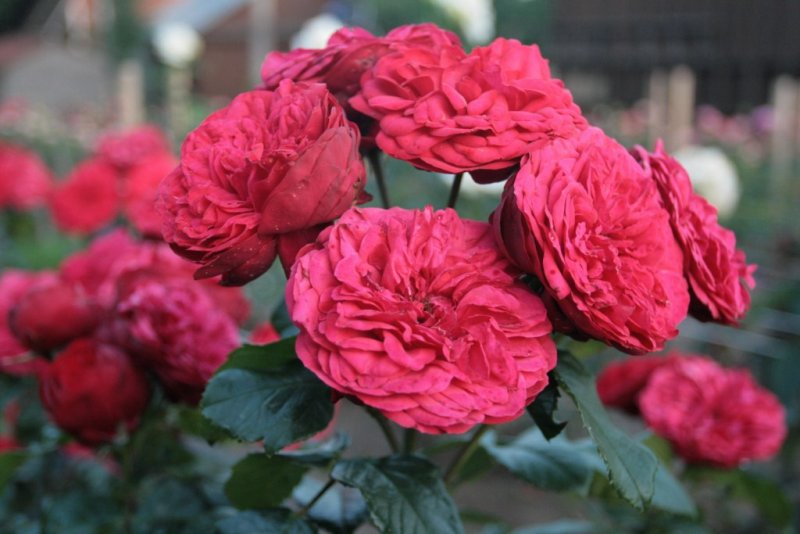
"Piano" (Rosen Tantau, 2007; HT, h = 1.0-1.2).A rare lover will stand today before a hybrid tea rose
Floribunda rose is the champion of flower resistance in our collection of almost 800 varieties. " Farandole". Addition of the flower provides him with an amazing firmness, and the fantastically bright orange-scarlet color almost does not fade. I didn’t make any special observations, but I think that the flowers hold up to a month. The variety is extremely popular, although the color requires caution when selecting companions. Such an active (“hot”) color in the garden is successfully diluted with white, crimson, or pale-colored spots.
" HommageaBarbara" - a rose, beautiful in all respects, which has almost “all in one” (except for smell). Durability of flowering is guaranteed a rare form, when the black-red wavy petals drape the center of the flower. Flowers solitary, not fully disclosed, and slightly drying, fall off. Holds firmly in my pets the past five years. You will never regret planting it in your garden.
From hybrid tea roses I will note " Piano", breeding company can be proud of this sort. The shape of the flower in the half-release stage attracts the eye not only of artists, but the flower's stamina and neatness are striking.
Some steadily flowering varieties tend to grow slowly, for example, " Anny Duperey" so long and pure blooms that inhibits the growth processes of the plant as a whole. I advise you to trim the faded flowers in a timely manner, otherwise the plant does not gain vegetative mass, and the next wave of flowering will be late and stingy.
Abundance
Some roses, as if in gratitude for the selection and care, with insane generosity give their bloom. Abundant bloom fascinates and relegates the eternal debate about the shape and size of the flower, double-skinned and even the scent. Abundant flowering is the most important advantage of any variety, but I have brought roses into the “magnificent ten” that are easy to grow even for beginner gardeners.
Ten of the most abundant flowering varieties
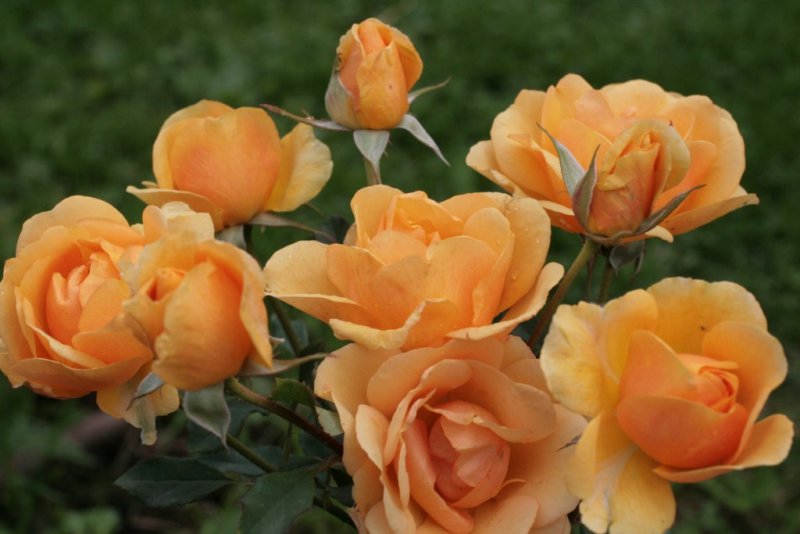
" Benita" (Dickson, 1995; F, h=0.7)
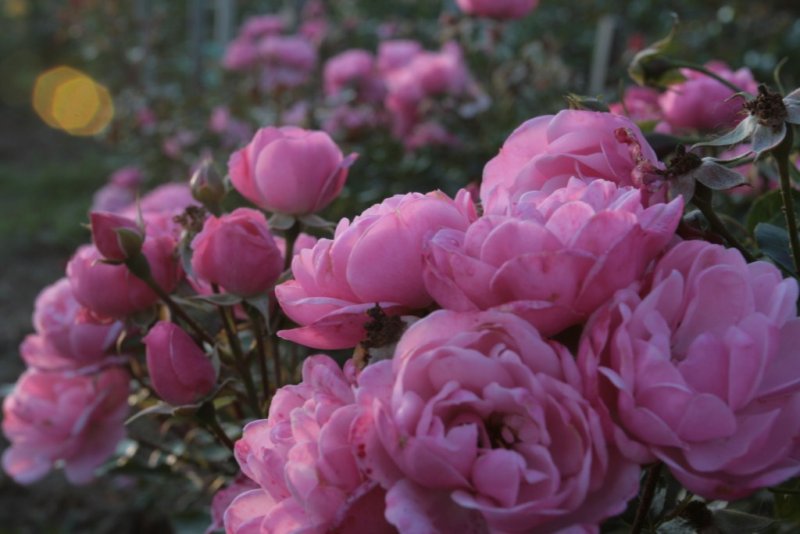
" Morena 2002 " (Harkness,2002; F, h= 0.5-0.6), mchristmas pink flowers "Morena 2002". so numerous that they admire.

" Geisha" (RosenTantau, 2005; F, h=0.5-0.7). Sometimes it seems that there are even too many flowers.
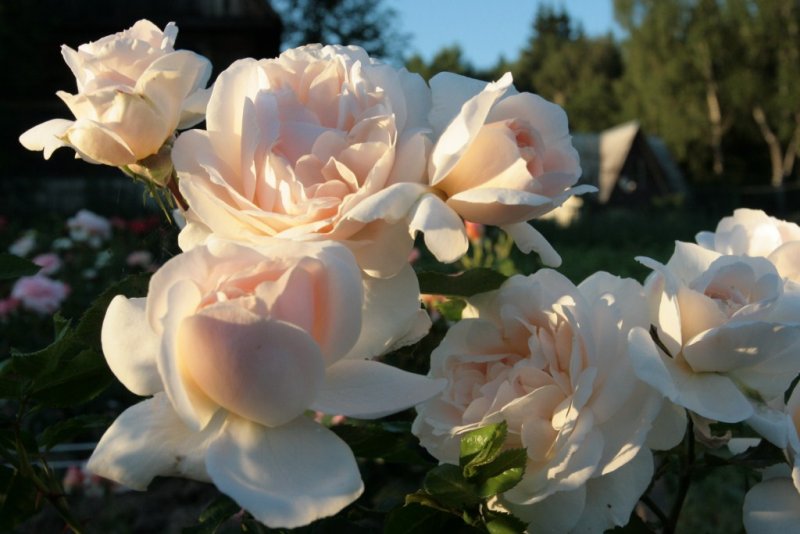
" Isarperle" (Noack, 2004; ADR-2004, F,h= 0.7-0.8), in our conditions corresponds to the ADR certificate.
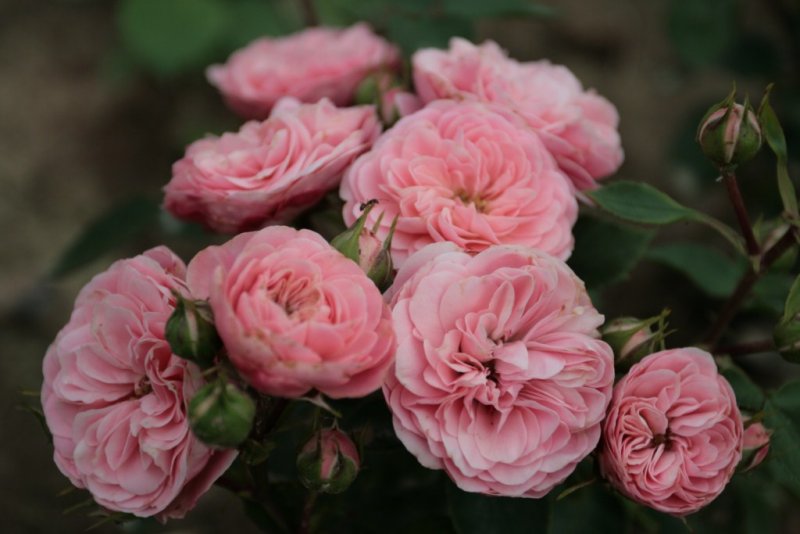
" Bailando" (RosenTantau, 2008; F, h= 0.7-0.9), nit is blooming
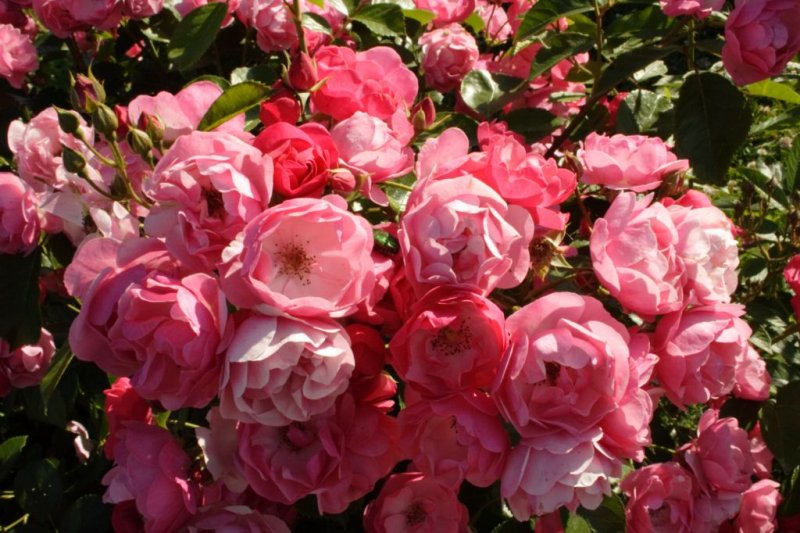
" Angela" (W. Kordes" Sohne,1984; S, ADR -1982, h= 1.0),to see an adult bush "Angela" in full glory is good luck
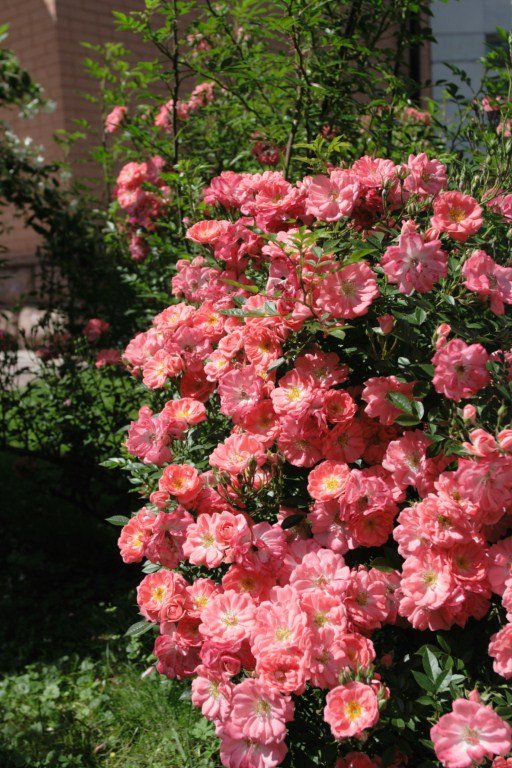
" Ferdy" (Suzuki, 1984; S, h= 1.0-1.5), pza for Cinderella - impossible to count the flowers

" Mein SchonerGarten (W. Kordes" Sohne, 1997; S, h= 1.1) gradeas a test for "favorite color" - it is chosen even in the stage of an unpainted bud.

" Coeur Farouche" (Delbard, 1993; S, h= 0.8-1.0), ncare for any garden
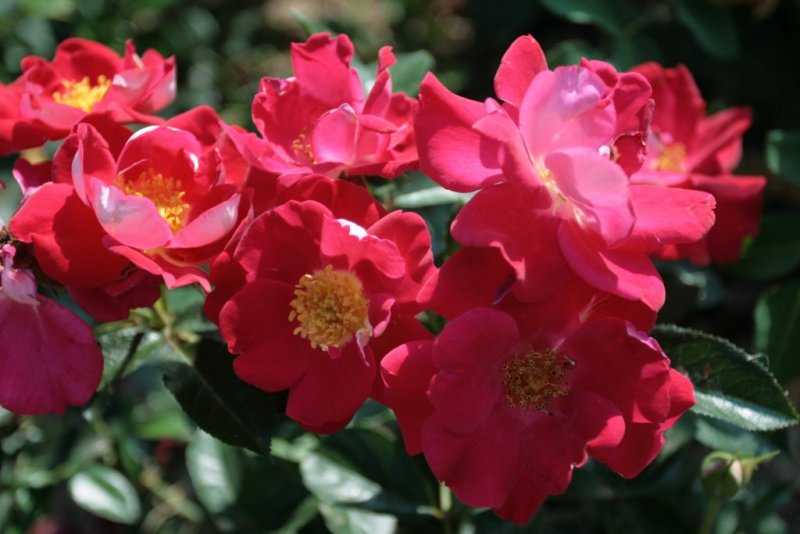
" GirlguidingUKCentenaryRose" (Harkness,2009; F, h=0.8).
In the landscape, the impression of abundantly blooming roses depends on the density of inflorescences. In the large and dense inflorescences of neighboring flowers, sometimes there is not enough space under the sun and the background for better perception. For example, charming pale orange pointy buds of the variety " Geisha" unexpectedly open into large flowers for a small plant. Sometimes it seems to me that there are too many flowers, given their size and density of the inflorescences. True, to convince that the abundance of flowers can sometimes be attributed to the shortcomings of the variety, I have so far failed.
Rose "Mohena 2002"by general characteristics few people choose voluntarily (short, half-double flowers, small, pale pink in the dissolution), but its blooming is admirable. It's hard to imagine a better curb along garden pathwhen numerous inflorescences are closed in the form of an umbrella, and silvery-pink flowers shimmer with pearlescent shine. One of the rare varieties that can be used for edging flowerbeds.
Continuity
Most lovers of roses, choosing varieties for their garden, they want roses to bloom constantly. Of course, I want to hope for the continuity of flowering, but strictly speaking, it cannot be, as there is no eternal youth. There are no continuously blooming roses, but some varieties create such an impression. In this case, we are not talking about the resistance of flowers that adorn the bushes for weeks, and the ability of the plant to form new flowers.
The impression of continuity of flowering is created by roses, which are capable of active branching and production of new shoots, biological feature which is the property to form new flowers in the current vegetative season. This is typical mainly for varieties from the group of floribunda and scrubs. Pay attention to the nature of the growth of such varieties. While the main inflorescence still blooms neatly, the underlying buds begin to actively grow and form flowers or inflorescences of the next order. Sometimes they bloom earlier than the top inflorescence lose its decorative effect. Not all varieties are so actively branching on their own, but they can be provoked to this. Stimulation of new flowering is only pruning of flowering inflorescences.
The rose blooms in order to eventually form seeds, and not to delight us with flowers. This is the eternal pursuit of reproduction can be used for their own purposes. Pruning faded flowers, we stimulate roses to a new attempt. Sometimes you can pinch individual shoots, and while the remaining flowers ottsvetut, pruned shoots will form new flowers, giving the impression of continuity of flowering. Experienced gardeners are able to regulate the flowering of individual varieties by nip and pruning so that it really looks continuous. In some moments, the flowers will be smaller, but they will look more spectacular on a thick green background, and you can admire the shape and shades of color.
Of course, not all varieties are the same, some roses take a pause between the flowering waves, while others, vigorously growing varieties, produce new shoots and new flowers almost all the time. There are varieties that grow vigorously, branch well, but for some reason stingy on flowers. A typical example is floribunda rose with elegant motley flowers. " Tocade" (Meilland, 1999), for her bulky bushes of flowers is always not enough, however, she has another and unexpected advantage - her shoots are devoid of thorns.
Top 10 Tireless Flowering Varieties

"Bonica 82" (Meilland, 1982; S, h = 0.8-1.0),blooms almost continuously

"Bad Birnbach" (W Kordes "Sohne, 1999;ADR-2000, h = 0.5),
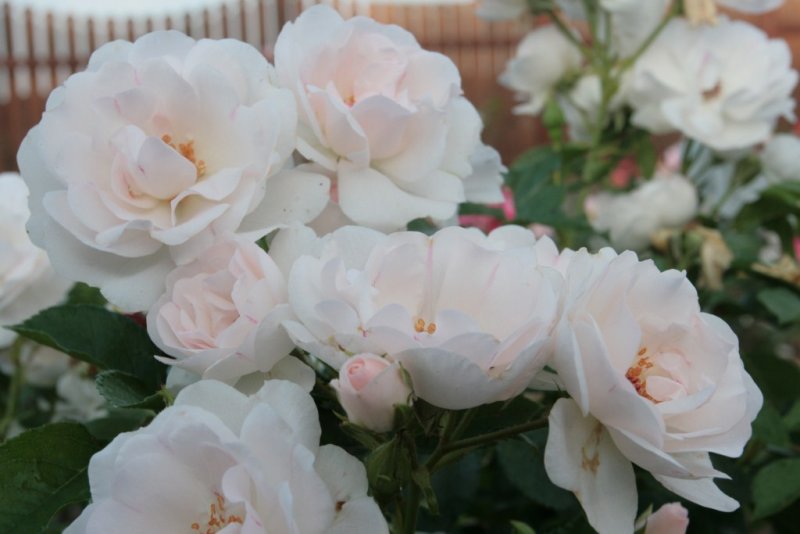
"Dominique Loiseau" (Delbard, 2003; S, h = 0.6), eif the faded "Dominique Loiseau" flowers are cut off in time, then there will be no pauses in the flowering

"Westzeit" (Noack, 2004; ADR- 2007, F, h = 0.6-0.7),until late autumn does not happen without flowers
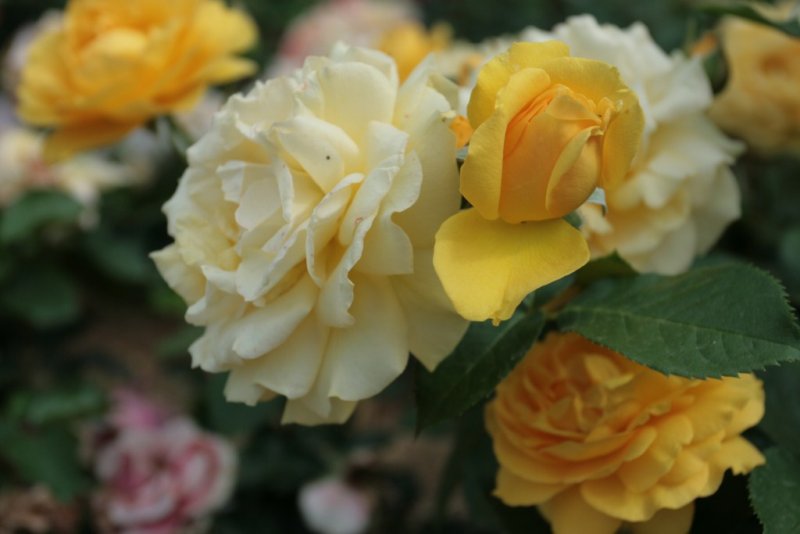
"Absolutely Fabolous" (Weeks, 2004; F, h = 0.6-0.8),California star "Absolutely Fabulous" will delight both beginners and lovers with experience
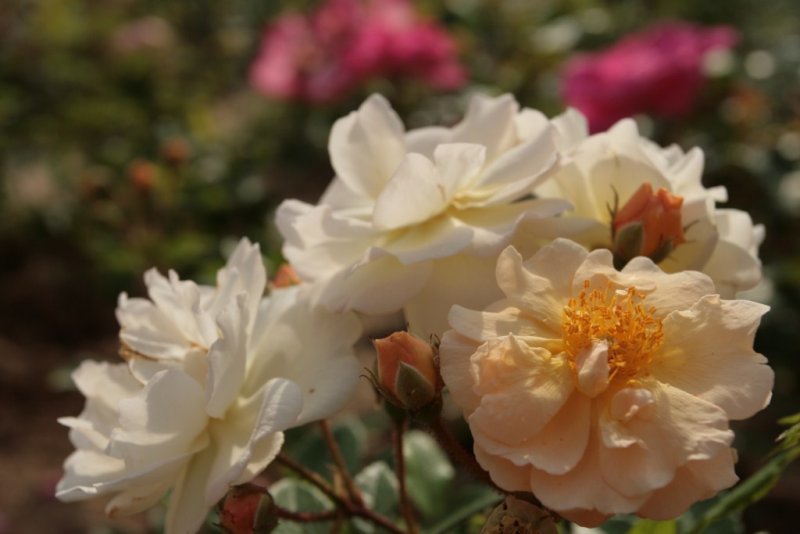
"Ghislaine de Feligonde" (Turbat, 1916; Hmult, h = 2.5), nattractive and unpretentious rose-rambler
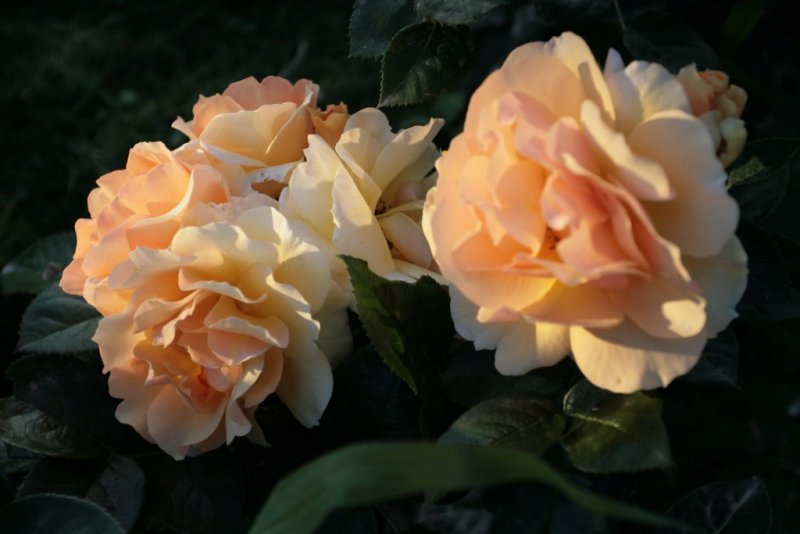
Return to the section

